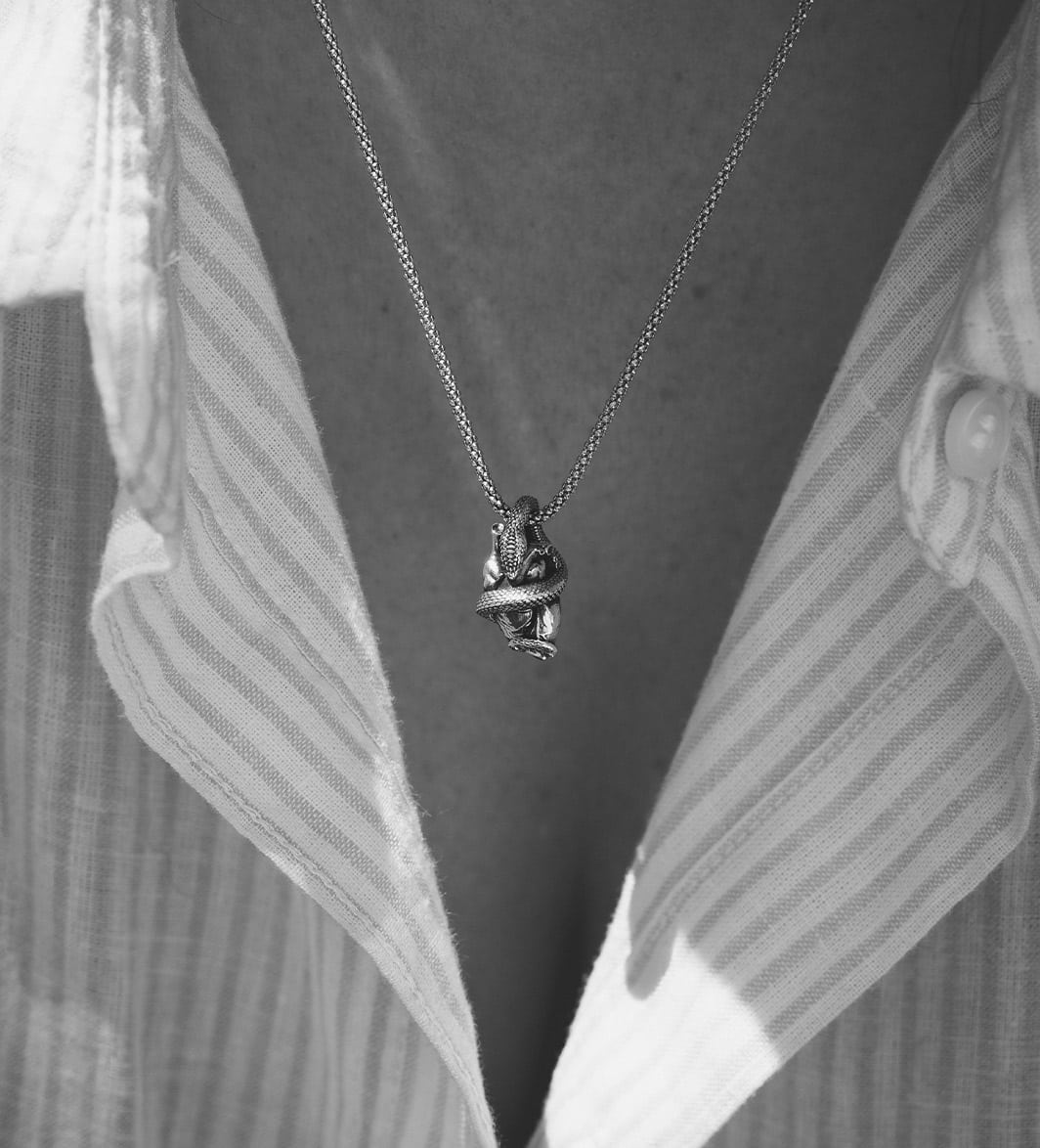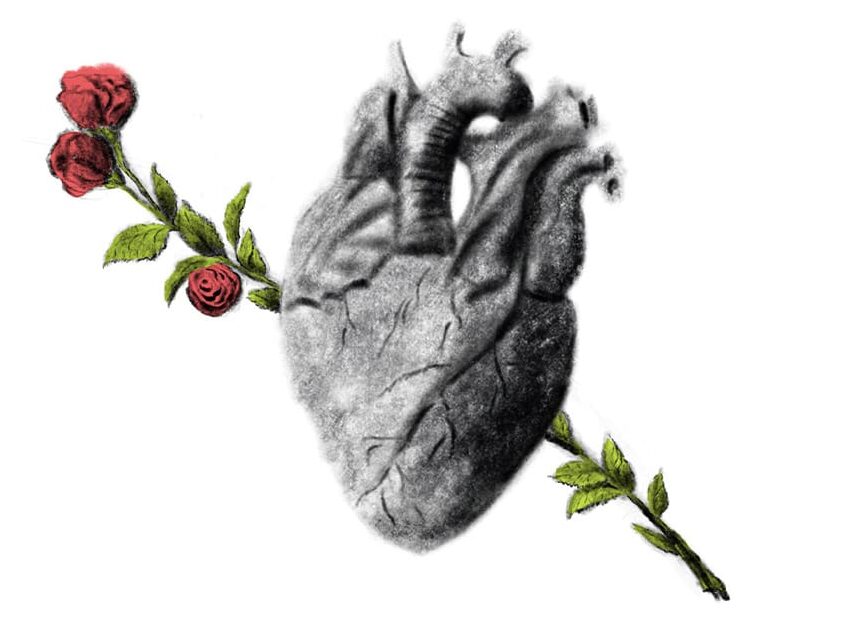BLACK FRIDAY – Only for Newsletter subscribers
Would you like to receive your order by CHRISTMAS? Make your purchase by December 1st.
Would you like to receive your order by ❤️ VALENTINE’S DAY? Make your purchase by January 25th.
CHRISTMAS CLOSURE – New orders will be processed from 8 January 2025
SUMMER CLOSURE 2024 – New orders will be processed from 19 August 2024 – 10% on the entire Shop

The heart is an element with countless nuances, meanings that have evolved over the centuries and through this article we will try to explore them together.
Today we are used to associating the stylized shape of the emoji ♥ with the heart.
We have been drawing it this way since childhood, and we are used to associating the deepest feelings of affection with this abstract shape.
But where did this representation come from?
When did it begin to be associated with the heart?
Above all, why is it that we load such profound meanings on a stylized element while struggling to accept the anatomical and realistic image of this organ?
Just with respect to the anatomical heart, its meanings and symbolism, you can find an in-depth discussion in this article of ours.
“Symbol par excellence of love, seat of feelings and emotions, vital organ and indispensable for the survival of almost all living things.”

The heart, as we said, is a symbol that has carried the weight of deep symbolism since ancient times.
The stylized representation of the heart, however, is not recent but finds correspondence as early as among the ancient Greeks, though it has no connection with the human heart.
For the Greeks, in fact, this shape represented vine leaves, a sacred symbol of the god Dionysus, often worn in garlands by priests during festivals.
In Cyrene, an ancient Libyan city that was once a prominent colony for both Greeks and Romans, the stylized symbol of the heart was used to depict silphium, a now-extinct plant whose seeds resembled its shape.
This plant, valuable both as a spice and as a medicine, was such a valuable trade commodity that its image was often stamped on many of the coins in circulation.
This is probably where the first association between form and meaning came from: wealth, prosperity, happiness and well-being.
The ancient Egyptians, on the other hand, believed that the heart was the seat of thought and life force.
During the weighing ritual, the judgment of the deceased before the court of Osiris depended on the weight of his heart.
It was placed on the plate of a scale, while a feather symbolizing Maat was placed on the other: if the heart was found to be heavier, it was devoured by Ammut.
Two symbols were used to indicate it: “ib,” which determined the seat of feelings and consciousness; and “haty,” used mainly in medical texts.
During mummification, the heart was the only organ that boasted the privilege of remaining inside the body, accompanied by some amulets whose shape, reminiscent of the corresponding hieroglyphic, resembles that of a vessel with a neck and loops.
It is actually a faithful reproduction of a bovine heart in section, in which precisely “neck” and “loops” correspond to the graft of arterial and venous vessels.
It was from the 13th century that the stylized symbol of the heart first appeared as an element representing the human heart and consequently its emotions.
The earliest evidence can be traced nor “The Romance of the Pear,” a French novel written in 1250 in which, within a capital letter, appears a man handing “his heart” to his beloved.
Thus, in the Middle Ages the stylized heart form, very similar to how we know it today, began to spread in art.
Beginning in the 1200s, hearts became popular especially inreligious art: red and surrounded by flames to represent faith and charity; crowned with thorns to symbolize Christ’s suffering; pierced by swords to express Mary’s grief at the loss of her son, but also used to show devotion to Jesus, representing a sacred love that today recalls the heart pierced by Cupid’s arrows.
The heart symbol spread rapidly thanks to two significant events: the first is related to the invention of playing cards in Egypt around 1370, which featured symbols such as cups, coins, swords and clubs.
In the 16th century, the French replaced these symbols with those still used today (clubs, diamonds, hearts, spades), and the growing popularity of the game helped consolidate the representation of the heart as we know it today.
The second event, already mentioned in the previous chapter, concerns the dissemination in the Catholic Church of accounts of divine apparitions: particularly the one received by St. Margaret Mary Alacoque in 1673, in which Christ showed her his heart as a symbol of his love for humanity.
It was precisely through the Christian religion that the cult of the Sacred Heart was born, a symbol of emotions, listening, feeling, the seat of the soul and forgiveness.
The heart since ancient times, though through different shapes and colors, has always symbolized prosperity, wealth, passion, emotions.
However, it is inChristian iconography that the red, bipartite heart has gained wider dissemination: one of the best-known examples of the dissemination of its stylized symbol is the famous “I Love NY” logo created by artist Milton Glaser.
The history of this logo is fascinating.
In the 1970s, New York City was facing significant challenges: high crime rates and a decline in tourism.
In 1976, the New York City Department of Commerce launched a campaign to promote tourism in the city, commissioning Milton Glaser to design the graphics.
The insight that makes this logo so memorable and ingenious was to combine three simple but not immediately decodable elements: it is the split second it takes to decipher the meaning of the logo that makes it stick indelibly in the memory.
Currently, the stylizedred heart emoji has become the most widely usedemoji on Whatsapp and communication channels, representing a quick and effective way to express affection or love through a simple gesture.
However, there is another tangible way to share feelings of affection and interest: gifting a heart-shaped piece of jewelry.
The heart, with its deep symbolism of love and emotional connection, finds considerable application in the jewelry industry, where it becomes a timeless icon for expressing intense feelings.
Whether it is a gift to celebrate a special moment, a declaration of love, or an anniversary, the heart testifies to the deep and authentic bond to oneself or between two people, thus becoming a universal symbol of affection and commitment.
In the world of jewelry, the heart becomes a powerful tool for communicating emotions and feelings: heart-shaped pendants, rings and bracelets convey an enduring message of bonding and affection, while the quality of the materials used represent the solidity of this connection.
“Feel No Pain interprets the element of the heart in its most faithful and accurate form, through pendants with anatomical features, enriched with symbolic elements, such as swords and snakes.”

Such an important and meaningful symbol could not but be part of our jewelry collection.
Over the years we have designed and composed a line of “heart” pendants characterized by an accurate and faithful representation of anatomical proportions and lines.
It is precisely this contrast between anatomy and symbolism, reality and poetry, that makes our pendants precious jewelry with deep meaning.
Anatomical hearts join abstract symbols, such as swords and snakes, to tell ancient stories of passions and ideals.
Each of our heart jewels tells a unique story, a different symbology accompanying different interpretations and meanings.
What is yours?
Discover it with our hearts collection and be inspired by the ancient history of an eternal symbol.
